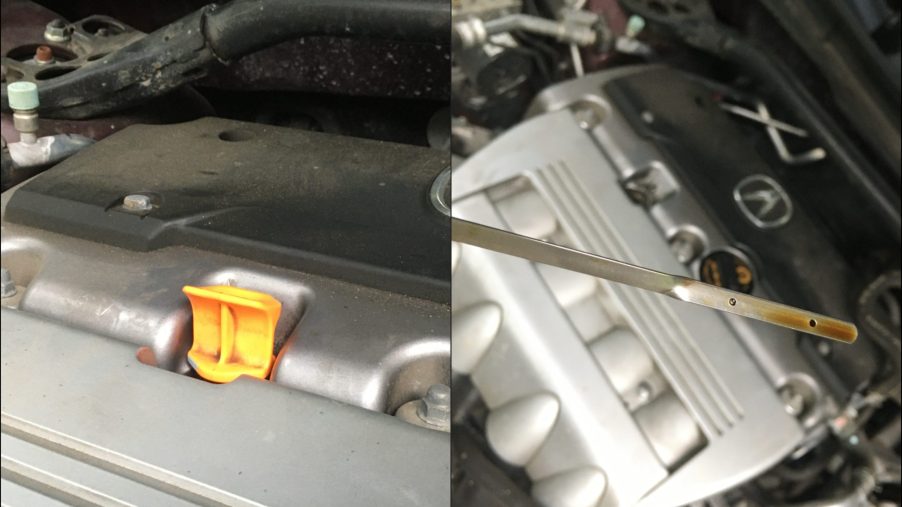
Car Maintenance: Checking Your Oil, Tires, and More
Car maintenance can be incredibly hard to keep track of. There are so many parts to replace, fluids to change, and boxes to check. That’s why I want to create an extensive list of all the little things you may forget to check, like oils, tires, and fluids. This won’t be an article on how to perform maintenance, like changing your oil. But it will give you a clue as to what you need to check and have replaced.
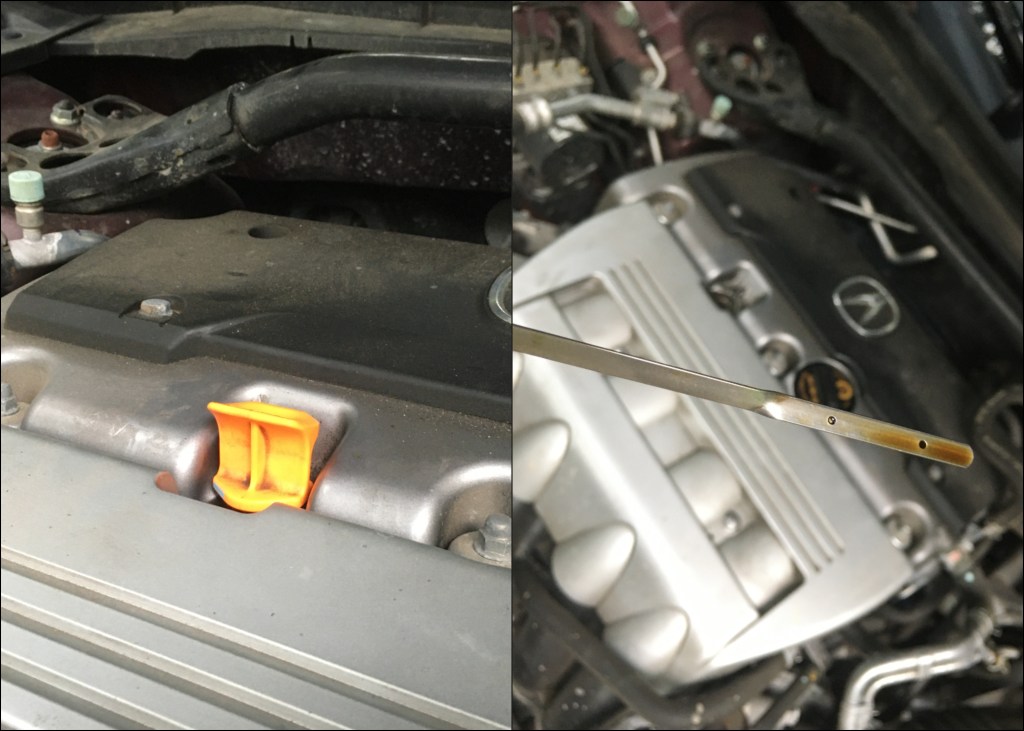
How to check your engine oil
Oil changed might be the most important aspect of car maintenance. But in order to know when it needs to be changed, you fist need to know how to check it and what to look for.
Make sure the car is parked on level ground before your check any fluid, especially oil. From there, open up your hood and look for an orange or black tab on the engine block itself. That’s your dipstick, and at the very bottom, there are two marks: a minimum, and a maximum. Wipe off all the excess oil, slid the dipstick all the way back in, and pull it out again.
That’s your oil level, which you want to be between the two dots. If it’s above, your engine is overfilled and can spring leaks. If it’s below, there could be serious damage to the engine components due to a lack of lubrication. Depending on which is true, it can either be very simple or a royal pain to get the oil level where it needs to be.
If your engine is low, you can top it off with the oil grade recommended in your owner’s manual. Unscrew the cap on the motor block and, using a funnel, pour a smidge back in. In most circumstances, the distance between the two dots represents a quart of oil. So if you’re closer to the bottom, a half a quart will nudge you back up. However, if you overfill, you’ve got to drain the oil out from the bottom. This will likely turn into a fully-fledged oil change, as it’s quite tricky to only take out a certain amount of oil without making a colossal mess.
If you notice your engine is burning oil, just be sure to check it more often. A good rule of thumb is to check it every 1,000 miles, or even every time you stop for gas. One other thing to mention: engine oil is supposed to be the same color as olive oil, a yellow-ish gold, not dark black. That’s a common misconception, and if your oil is looking really dark when you check it (close to black, the oil pictured above is about halfway through its usable life), it may be time to change it.
How to check your transmission fluid
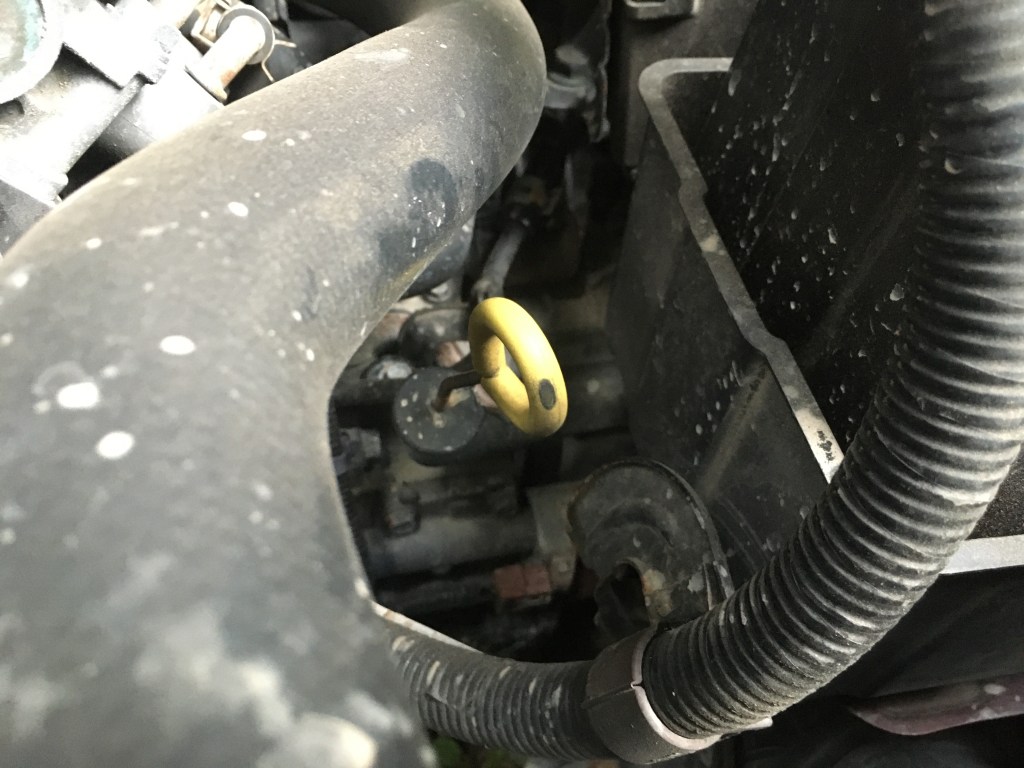
First of all, checking your transmission fluid is different on every vehicle. Car and Driver go into an extensive list of steps and reasoning for this process. Regardless, you’ll want to find a yellow or black ring buried in your engine bay (yes, it will be buried).
Your car might not have a tab, or it’s a tab that’s permanently sealed. If that’s the case, then your car is filled with lifetime fluid. But that really isn’t as “lifetime” as you think. Consult your owner’s manual before you pull any plugs or perform any car maintenance you’re not supposed to.
Some cars, like mine, require you to run the engine. Others you can check the fluid cold. If you need to start the car, engage the handbrake, then shift into either park (or neutral if you drive a stick). Let the engine heat up to normal operating temperatures, or until the temperature gauge is about halfway up. Then shut off the car.
Whether you’re checking the fluid hot or cold, the process is very similar to checking your engine oil, just with a different tab. Pull out the dipstick, wipe it down, reinsert it, and check again. Unlike engine oil, your fluid level should never move. If it is, head to a mechanic, as you have a transmission fluid leak somewhere. If everything looks normal, just reinsert the dipstick and you’re good to go.
How to check your brake fluid, wiper fluid, and coolant
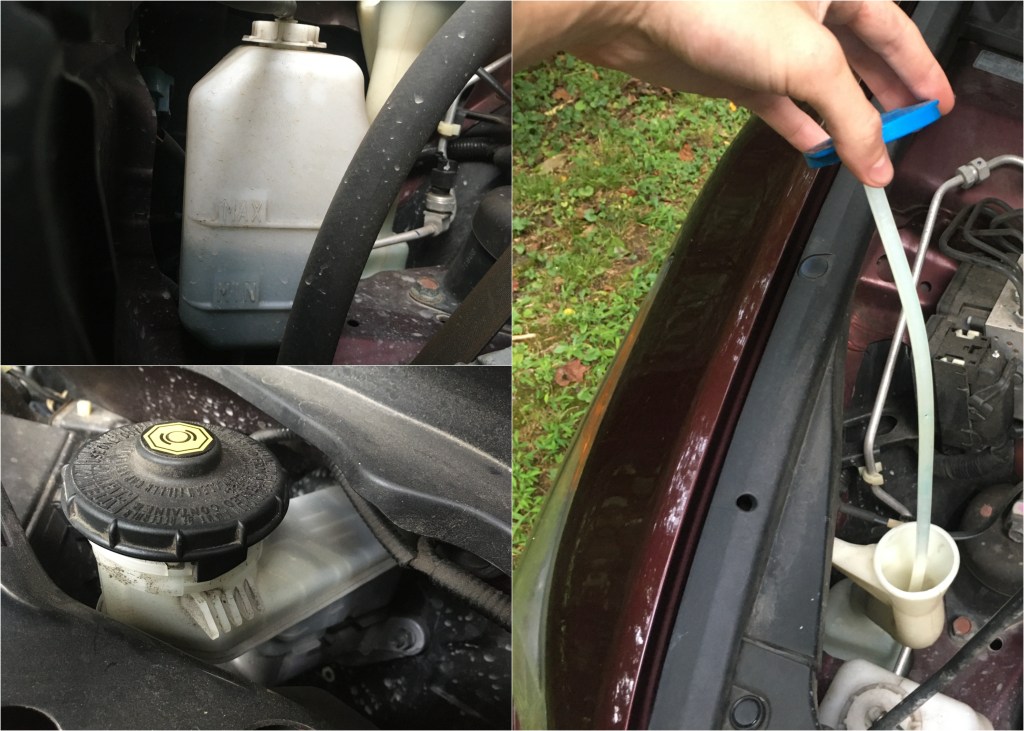
Glancing at your brake fluid, wiper fluid, and coolant levels is fairly easy. The reservoirs where you’d fill them are typically labeled with a minimum and maximum level. In the case of wiper fluid, you may have to pull up on a tab to check the level, but that’s about all. However, these quick looks won’t tell you everything you need to know, which is where things start getting tricky.
Mechanics are better suited to check your coolant and brake fluid, though you can test it at home. For your brake fluid, use a syringe to take a small portion of the fluid out (not too much, otherwise you’ll allow air into the system). Put the sample in a plastic Tupperware container and use a brake fluid tester pen. That’ll determine how much moisture is in the fluid, which can create rust
To properly check your coolant, you’ll want to get under the car and take out another small sample. Look online and find out where your coolant drain plug is located, crack it open so some fluid can drain, and close it to prevent any more from leaking out. Depending on the coolant your car uses, it’s supposed to either be bright red, blue, green, or orange. If it looks rusty, or has metal flakes floating around inside, then it’s time for a coolant flush.
However, both of these jobs are somewhat complicated and, if not performed correctly, could damage the car. Having your local mechanic check and possibly change those fluids is smart, especially if you’re new to this.
How to check your tire pressure and tread
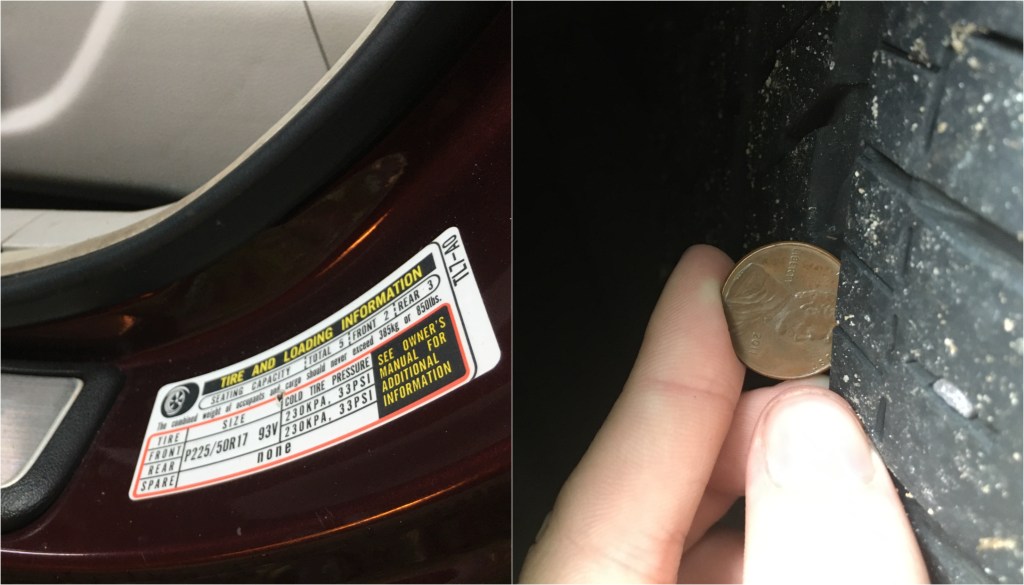
You can purchase a rudimentary tire pressure gauge for $10 from any parts store, or a digital one that might be more accurate. Regardless, unless your car has tire pressure monitoring systems onboard, you’ll need one in order to check your tires. Unscrew the little cap on your rim, stick the pressure gauge inside, and see what the number is.
The number you get will be in PSI, but in order to know how much air you should have in those tires, all you need to do is open the driver’s side door. Usually, there’s a small sticker that’ll tell you how much air goes in the front and rear tires. You can purchase a $30 12-volt air compressor from most part shops as well and keep it in your car in case the tires need air, but if you’re a few PSI higher or lower then it’s nothing to worry about. After all, it’s impossible for every tire to be filled with the exact same amount of air.
Pretty simple, right? Well, if you thought that was easy, then you’ll love checking your tire tread. It’s the simplest form of car maintenance, as all you need is a penny, which you’ll stick into the large tread of your car. If ol’ Abe Lincoln gets a haircut, you’re fine, though if he doesn’t, you need a new tire. Also be sure to check for scuffs and scrapes on the sidewall, as those weaken the structural integrity of the tire and can lead to a blowout.
How to create your car’s maintenance schedule

Here’s an insider trick: automakers have a recommended maintenance schedule that they’ve crafted to ensure your car falls apart after the warranty expires. So, if you’re following the guidelines illustrated in your owner’s manual or from the manufacturer, you’re buying into their lie. Don’t worry though, your car will continue to run fine, but there are more universally excepted numbers for changing oil, tires, and so forth. We’ll prattle them off here:
- Have your oil changed 2,500 miles sooner than the reccomened service mileage (for example, my interval is 10,000 miles, but I change it every 7,500 miles).
- Have your tires rotated every 5,000 to 8,000 miles (sooner if you can swing it).
- Replace your tires once that tread is too low (don’t wait on that one).
- Have your transmission fluid changed every 60,000 – 80,000 miles.
- Flush your brake fluid every two years.
- Have your coolant flushed every 30,000 miles.
- Fill your wiper fluid resevoir whenever it runs out.
Yes, it’s a lot to try and understand, but keeping up with that maintenance can ensure your automobile is running smoothly for years to come. And keep in mind that the maintenance schedule highlighted here may not be best for your particular car, but is a fairly good guideline. Consult a mechanic, and do plenty of research on your particular make and model. Just keep your eye on these things so your car’s happy and healthy.


